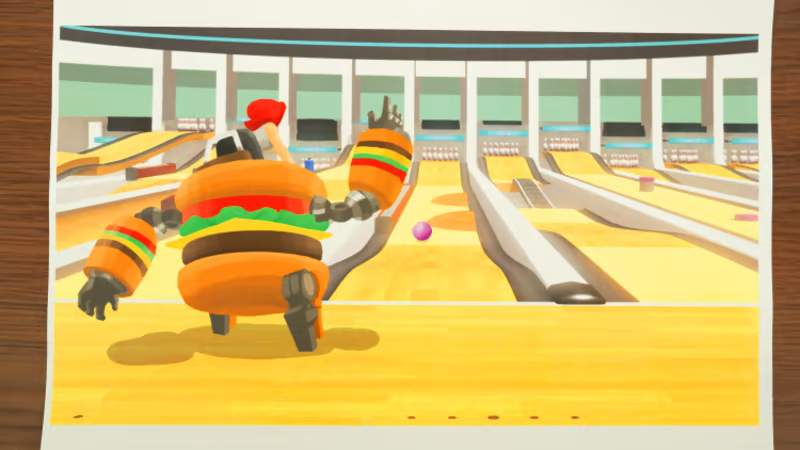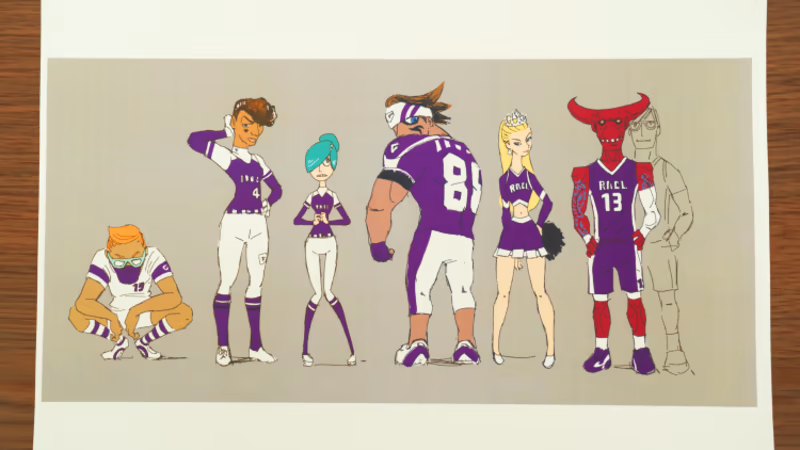In a recent Ask The Developer session with the game’s designers, producer Takayuki Shimamura and art director Junji Morii discuss the development of player characters. That included having players inside robots designed to look like burgers, bears, skulls, and more.
“I remember we had the most outlandish characters that looked like robots,” recalls Shimamura. “Around the time when we decided to restart the project from scratch and were told that we would be starting over to create the world’s most easy-to-invite to motion-based game, I asked, ‘Are you sure we can’t go this far?’” adds Morii. “At first, everyone was so excited about this robot idea that we all thought, ‘This could be fun!’ We even made a prototype. But when we actually saw the robot on the screen and moved it around, a blanket of silence fell over everyone.” Adds director Yoshikazu Yamashita: “The player controls the character in the robot to operate the robot. Then, the robot throws the ball. There are too many steps in between.” Another option the team experimented with was student characters with a theme of intercollegiate sports. In the end, though, they decided to go with human characters but a new design instead of the Wii game’s Mii characters. Says Yamashita: “The Mii characters in Wii Sports didn’t have arms. The sphere was considered a hand, and even if the ball went a little far away, the hand would fly out and hit back. It did not look unnatural because of the lower screen resolution at the time and that character setting. But I thought it would be difficult to incorporate it into today’s game consoles. Also, I was quite certain that in the memories of our customers, the Mii characters have arms.” The extra detail on these characters meant that over 650 animations were required, instead of 30 for the Mii, in order to make their movement look as natural as possible. The team also discusses difficulties in designing the game to make it distinct from the previous Wii Sports iterations. “With the Wii Sports and Wii Sports Resort games, we came up with as many ideas as we could think of…and most of them were achieved and implemented in the titles, so we felt that we had done all we could,” says Yamashita. “My impression at the time was that if we were to do a sequel in the future, it would be quite difficult. Therefore, when this Nintendo Switch Sports project started, I honestly felt that there weren’t any sports left to be added.” And while development on the game started soon after the release of the Switch console, it took time to ensure the game retained the series’ accessibility while transferring the simple, intuitive controls to the Joy-Con. “Going back to the basics, we thought this game should be something our customers can feel an immediate response to and feel it is something interesting, with just a single swing. Fortunately, we have had customers who felt this way about our past works, but we were determined to make it something that would get both those who knew the past titles and newcomers to say, ‘Ah, this is fun,’ the moment they picked up the Joy-Con controller,” says Yamashita. “Initially, the idea of playing sports by swinging was already decided, and we had to figure out how to implement this idea with the Joy-Con controller. As a programmer, this required a lot of trial and error,” says program director Shinji Okane. “If you hold a Wii Remote, it has a certain amount of weight and size,” Okane adds. “Therefore, it was easy to guess how the players would hold and swing it, and as a programmer, it was relatively easy to detect how it was swung as well. But the Joy-Con controller for Nintendo Switch is much smaller than the Wii Remote controller. So it varies a lot from person to person in the way they hold and move it.” The game received a Recommended in our Nintendo Switch Sports review: “online or local, it’s a treat.”


